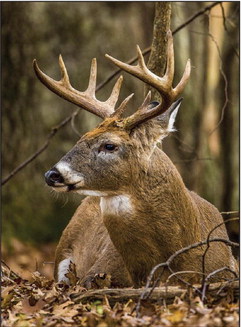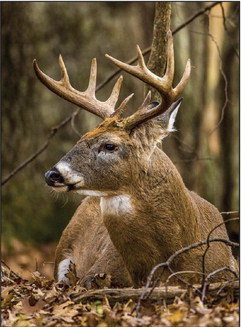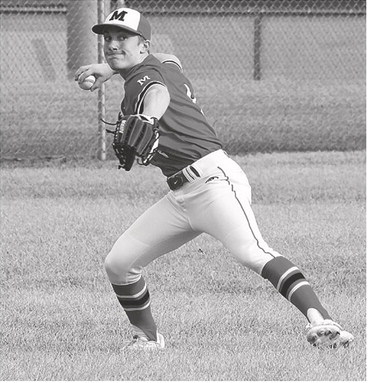Late start, storms contribute to drop in deer harvest


As Wisconsin hunters put another gun deer season in the books, preliminary license sale, harvest registration and hunting incident numbers are now available.
Wisconsin’s hunting legacy runs deep, and hunters are encouraged to share their stories from this year’s deer hunt -- the funny ones, the big buck stories and the stories of the ones that got away. Be sure to follow DNR on Facebook, Twitter and Instagram to share your experience and for more updates, photos and stories.
In 2019, 564,664 gun deer licenses were sold through the end of the nine-day gun deer season, compared to 576,277 in 2018. This is a 2.02 percent decrease.
In total, 792,548 gun, archery and crossbow licenses (not including upgrades) have been sold through the end of the nine-day gun deer season, compared to 803,772 in 2018, a 1.40 percent decrease. Of the licenses sold to date, 54 percent were sold in person through transactions at DNR license agents, including through DNR offices and agents. The remaining 46 percent of licenses were purchased online. Deer hunting license and harvest authorization sales will continue throughout the remaining deer hunting seasons.
Preliminary Registration Totals
Overall, preliminary figures show that 160,769 deer were registered during the nine-day gun deer hunt, compared to 213,972 in 2018. Of the deer harvested in the 2019 nine-day season, 75,236 were antlered compared to 105,315 in 2018. The nine-day hunt also provided successful hunters with 85,533 antlerless deer, a decrease from 108,657 in 2018.
While opening weekend saw mild temperatures throughout the state with some snow in the north, hunting conditions deteriorated throughout the remainder of the season as heavy wind, snow and rain moved through the state. The largest declines in antlered harvest occurred in the northern forest zone, where blizzard-like conditions and significant snow accumulation hindered hunter access.
Reports from hunters around Wisconsin indicated low daytime deer activity throughout the gun deer season. Hunters afield within even a few miles of each other reported varying levels of deer sightings, confirming that deer are not evenly distributed on the landscape.
Standing corn proved to be an additional factor that likely influenced success in the field. At the conclusion of the nine-day, corn harvest was 66 percent complete, 22 days behind the 2018 harvest.
Wisconsin held the earliest possible deer season in 2018 followed this year by the latest possible season opener. When this occurred between the 2012-13 and 200707 seasons, there were similar declines in year-to-year registration totals.
Harvest numbers will climb as hunters enjoy additional hunting opportunities: -- Dec. 2-11 - statewide muzzleloader hunt; -- Dec. 12-15 - statewide four-day antlerless-only hunt; -- Dec. 24 to Jan. 1, 2020 - nine-day antlerless-only holiday hunt in select Farmland Zone counties; -- Now - Jan. 5, 2020 - remaining archery and crossbow seasons; and -- Jan. 5-31, 2020 - extended archery and crossbow seasons in select Farmland Zone counties.
Hunters may use any unfilled antlerless harvest authorization during any of these hunts, but they must be used in the zone, county and land type designated on the harvest authorization. For more information regarding hunts offered in each county, check out the interactive deer map at dnr. wi.gov, keyword “DMU.”
Nine-day Season Hunting Incidents At the time of this news release, the DNR Bureau of Law Enforcement reports four firearminvolved injuries and zero fatalities for the entire 2019 nine-day gun deer season.
Three of the four incidents occurred on Saturday, Nov. 23, in Oneida, Marathon and Fond du Lac counties: -- In Oneida County, a 38-year-old man suffered a self-inflicted firearmrelated injury, striking his left foot.
-- In Marathon County, a 29-year-old woman suffered a self-inflicted firearm-related injury, striking her left foot.
-- In Fond du Lac County, a hunter shooting toward a running deer struck a 19-year-old woman who was a member of his same hunting group in the left hand.
The fourth weekend incident occurred in Washburn County on Sunday, Nov. 24. In Washburn County, a 31-yearold man was struck by a single bullet from a hunter in a different hunting group. The shooter has been identified. The investigation continues, and no additional details are being released at this time.
Wisconsin’s 10-year average for hunting incidents during the nine-day gun deer season is 6.8. The decline in incidents is the direct result of hunter safety education given by Wisconsin’s volunteer instructors and conservation wardens. As part of this push for safe hunting, wardens remind all hunters to use the four firearm safety rules as a cornerstone for safe and successful outings: T - Treat every Firearm as if it is loaded; A - Always Point the muzzle in a safe direction; B - Be certain of your target, what’s in front of it and what’s beyond it; K - Keep your finger outside your trigger guard until you are ready to shoot.
Hunting is a safe recreational activity, as seen in the downward trend in the number of firearm-related hunting incidents during the popular nine-day gun deer season.
“This is the fourth consecutive nine-day deer gun season without a fatality,” said DNR Chief Conservation Warden Todd Schaller. “Four incidents are tied with the lowest on record. This is certainly a tribute to our hunters and volunteer safety education instructors.”
To learn more about safe hunting in Wisconsin, search keywords “safety tips.”
Hunters Continue to Embrace GameReg Reports from hunters indicate that going online is the fastest and easiest way to register deer. The GameReg internet registration system and call-in phone option worked well, while hunters continue to visit walk-in stations that offer these services. Positive feedback was received throughout the season as hunters enjoyed the convenience and flexibility of GameReg.
On Nov. 23, an average of 31 registrations were processed per minute, with peak sales exceeding 90 transactions per minute. To date, 68 percent of harvest registrations were completed online, and 32 percent were completed via telephone for the 2019 deer hunting seasons.
The accuracy of deer harvest numbers is directly related to the level of hunter compliance. If a hunter forgot to register their deer, they still have time to use GameReg and help ensure each deer harvest is counted. For more information, visit dnr.wi.gov and search keyword “GameReg.”
Deer Hunter Wildlife Survey Remains Open Through Remaining Seasons
The Deer Hunter Wildlife Survey will remain active until all deer seasons have ended, and wildlife managers ask that hunters submit a report of what they observe during their time in the field. This information provides valuable data to improve population estimates for Wisconsin’s deer herd and other species. For additional information, search keywords “deer hunter wildlife.”
Hunters of all ages who head out for their first hunt are encouraged to mark the occasion with a first harvest and first hunting experience certificate. To create a certificate, visit dnr.wi.gov and search keywords “first certificates.”





